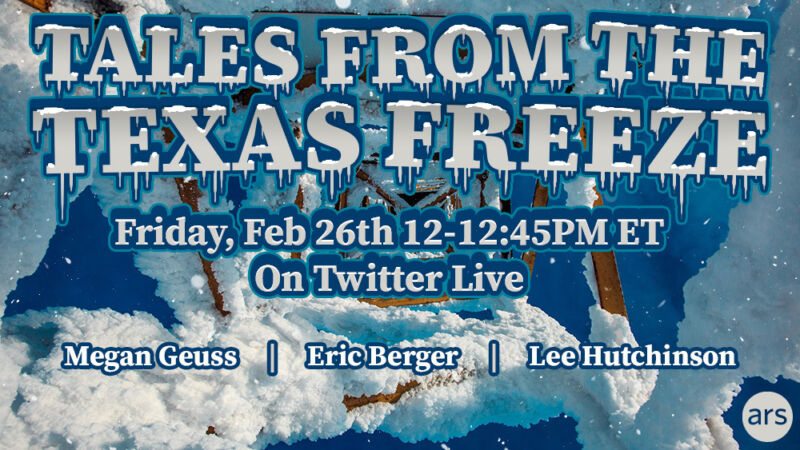
Most of Texas endured record or near-record low temperatures last week as a late-season (for Texas, at least) arctic cold front sagged down across the state. In the week leading up to the event, forecasters warned residents to prepare for the kind of cold common in more northern climates but exceedingly rare for most of us down here—temperatures in the teens or even high single-digits (think lows around -12 to -10 degrees C for you folks who don't use Freedom Units)—and even (gasp!) snow. Along the Gulf Coast where Ars Space Editor Eric Berger and I live, the combination of low temperatures and wintry precipitation was a once-in-30-years kind of event. (Indeed, the last time it got this cold here was in December 1989.)
The cold was expected, and while it's unpleasant as hell to deal with in a city built for summer heat and not winter cold, it would have been manageable on its own. But what we weren't expecting—well, most of us, at least—was having to deal with this rare low-temperature excursion without power or heat. As the front plowed across the state on the evening of Valentine's Day, demand on the state's power grid spiked to a record 69GW as residents turned on heaters to combat temperatures sliding down into the teens. (That level of power demand beat even the predicted extreme weather peak of 67GW and was higher than the previous February 2011 cold-weather-demand peak of 59GW.) As demand spiked, the state's electrical grid operators had to take emergency measures to stave off total collapse.
And thus began a week of freezing misery for more than 4 million Texans who had to endure the coldest weather in decades without any power or heat, in homes designed to release summer heat rather than keep it in. The majority of the power-loss issues occurred in Houston.
No comments:
Post a Comment